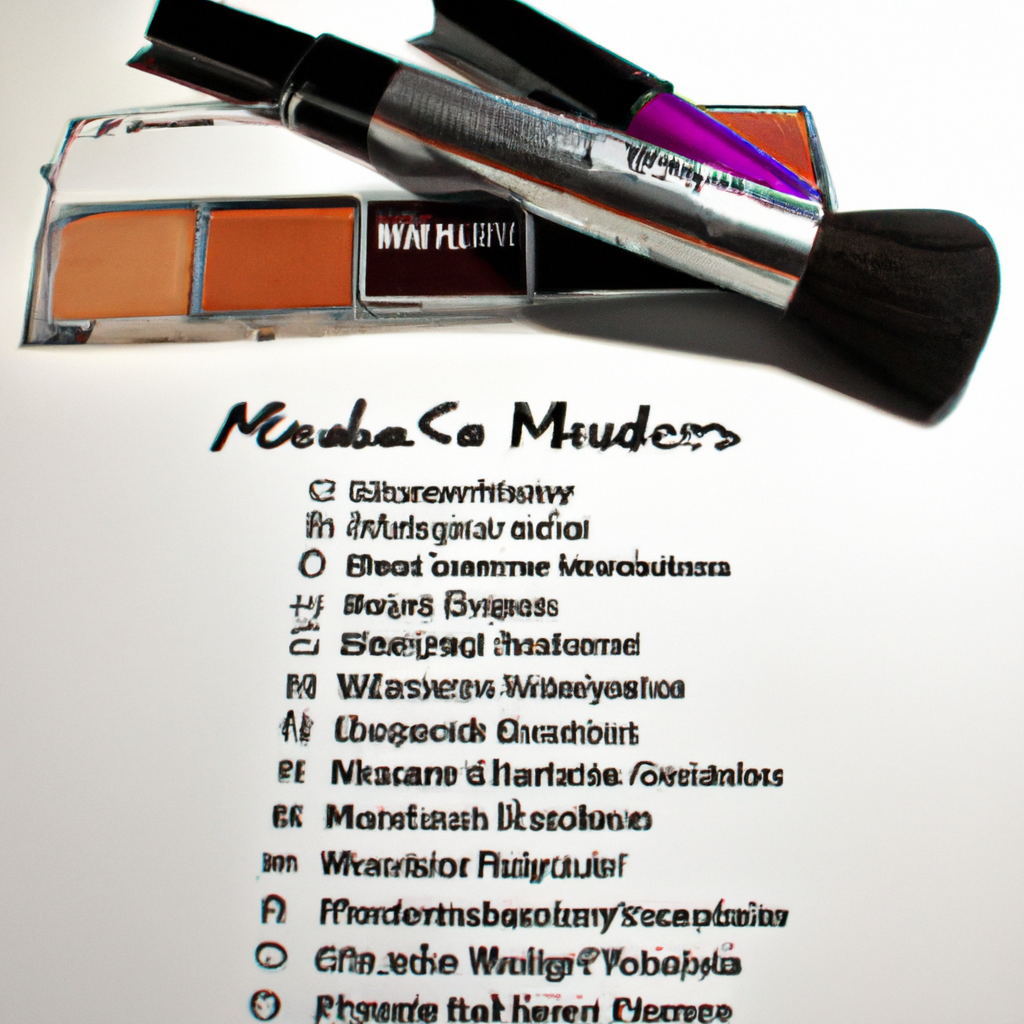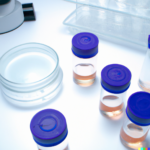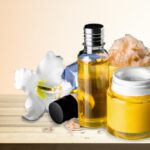Understanding the Complex World of Cosmetics Production
Luxury cosmetics manufacturing is a complex process that involves breaking down makeup formulas into their component parts. As such, understanding the process—and the principles that drive it—is essential for anyone who works in the cosmetics industry. Whether you’re a chemist, product manager, or cosmetics expert, having an understanding of makeup formulas gives you the knowledge and skills to create innovative, quality cosmetics that meet the discerning needs and expectations of consumers.
What is an Ingredient and How Does it Relate to Makeup?
An ingredient is an individual component of a makeup formula, usually listed on the product’s information label. Ingredients can range from fragrances, waxes, pigments, and preservatives to thickening agents, fine powders, and colorants. When combined, these ingredients create a formula that creates a beauty product with specific features.
Why is Understanding Makeup Formulas Important?
When making makeup, it’s important to understand the individual components and how they work together to produce the desired results. This includes understanding the role of each ingredient, the chemistry of their interactions, and the impact that their combinations have on the final product.
By understanding this, manufacturers are better able to ensure that their cosmetics are of the highest quality and deliver the desired benefits, such as hydration, protection, or coverage. Additionally, it allows them to create innovative formulas that provide desirable features and meet the expectations of even the most discerning consumers.
What Factors Should be Considered When Breaking Down Makeup Formulas?
• Pigments: While all makeup products contain pigments, they can vary in shades and intensity. This can be determined by their composition, including the particle size, hue, and lightfastness.
• Dyes: Dyes may be used to deepen or intensify cosmetics’ hue and hue fidelity.
• Texturizers: Texturizers help coat surfaces, add body, and reduce the amount of light reflected by a cosmetic.
• Emollients: Emollients will have a different effect on a cosmetic depending on the type and amount used. They can make a formulation creamy or glossy, as well as add lubrication and softening properties.
• Preservatives: Preservatives are needed to prevent product spoilage and bacterial growth. They’re often naturally derived, or have been synthetically produced to mimic extracts found in nature.
• Solubilizers: These chemicals are used to stabilize and help solubilize oil-soluble ingredients.
• Perfumes: Most cosmetics are scented, though some are unscented. Perfumes used in makeup typically fall into three categories—aromatic compounds, essential oils, and synthetic fragrances.
• Antioxidants: Antioxidants are used to protect cosmetics from being affected by oxidative damage.
In addition to these key ingredients, there are a number of other components that can be used in cosmetics, including surfactants, emulsifiers, chelating agents, cellulose derivatives, and more. Each of these has specific purposes and effects, so it’s important to understand their role in makeup production and formulating.
What Are the Benefits of Breaking Down Makeup Formulas?
Breaking down makeup formulas helps manufacturers not only create innovative products but also guarantee the highest quality and provide the safest formulations possible. It also enables cosmetics companies to meet consumer expectations and stand up to competition within their industry. Some of the key benefits include:
• Efficiency: Breaking down makeup formulas allows manufacturers to identify the most effective ingredients, enabling faster and cost-efficient production.
• Innovation: Understanding makeup formulas enables cosmetic makers to innovate faster, creating products that meet the needs of today’s consumers.
• Quality: Breaking down makeup formulas and understanding the individual components helps ensure the highest quality standards are met.
• Safety: Knowing what ingredients are used in a makeup formula helps guarantee products are safe and do not pose any health risks to consumers.
FAQs
What is the Purpose of Breaking Down Makeup Formulas?
The purpose of breaking down makeup formulas is to understand the individual components and how they interact to create a particular beauty product. This helps manufacturers create innovative, safe, and high-quality products that meet the expectations and needs of consumers.
What are the Benefits of Understanding Makeup Formulas?
The key benefits of understanding makeup formulas include innovation, quality, safety, and efficiency. By understanding the individual components and their effects, cosmetic makers can create innovative products, guarantee high-quality standards, and ensure their formulations are safe for consumers.
How Many Components are Needed to Make Makeup?
The exact number of components needed to make makeup will vary from product to product. Generally, products will contain a blend of fragrances, waxes, pigments, preservatives, thickening agents, fine powders, colorants, emollients, and antioxidants. However, some products may also include surfactants, emulsifiers, chelating agents, cellulose derivatives, and other ingredients.
The Role of Emulsifiers in Makeup Formulas
Emulsifiers play a crucial role in makeup formulas, contributing to the stability and texture of cosmetic products. An emulsion is a mixture of two or more substances that are normally immiscible, such as oil and water. Since many cosmetics contain both oil-based and water-based ingredients, emulsifiers are used to bind them together and create a stable, homogeneous product.
The primary function of emulsifiers is to reduce the surface tension between oil and water, allowing them to mix uniformly. By forming a protective layer around the dispersed oil droplets, emulsifiers prevent them from coalescing or separating from the water phase. This ensures that the product maintains its desired consistency and appearance over time.
In addition to their emulsifying properties, these ingredients also contribute to the sensory experience of cosmetics. Emulsifiers can enhance the spreadability and application of makeup, making it easier to blend and achieve a smooth, even finish. They also improve the moisturizing properties of products by helping to retain water on the skin’s surface.
Commonly used emulsifiers in cosmetics include **glyceryl stearate**, **cetearyl alcohol**, **polysorbate 80**, and **sorbitan stearate**. These emulsifiers are carefully selected based on their compatibility with other ingredients and their ability to provide stability and functionality to the formula.
When formulating makeup products, manufacturers must consider the appropriate emulsifier type and concentration. Factors such as the desired texture, skin compatibility, and the presence of other active ingredients need to be taken into account. The right choice of emulsifier can greatly impact the performance and overall quality of the final product.
It’s worth noting that emulsifiers are just one component of a complex makeup formula. The synergy between emulsifiers and other ingredients, such as thickeners, preservatives, and antioxidants, is essential for creating a successful and marketable cosmetic product.
In conclusion, understanding the role of emulsifiers in makeup formulas is vital for creating high-quality cosmetics that offer optimal stability, texture, and performance. By selecting the appropriate emulsifier and formulating with precision, manufacturers can ensure that their products deliver the desired results and meet the expectations of consumers.
Advancements in Makeup Formulation Techniques
The cosmetics industry is constantly evolving, and advancements in makeup formulation techniques have paved the way for innovative and cutting-edge products. These techniques not only enhance the performance and aesthetics of cosmetics but also contribute to the overall customer experience. Here are some notable advancements in makeup formulation:
Nanotechnology:
Nanotechnology has revolutionized makeup formulation by allowing the creation of ultrafine particles with unique properties. Nano-sized ingredients, such as pigments and UV filters, provide improved coverage, enhanced color intensity, and better sun protection. Moreover, the small particle size enables smoother application and a more natural-looking finish.
Encapsulation:
Encapsulation technology involves enclosing active ingredients in microscopic capsules. This technique offers numerous benefits, including improved stability, controlled release, and targeted delivery of ingredients. In makeup products, encapsulation can enhance the longevity of certain components, such as fragrances or skincare actives, ensuring they remain effective throughout the product’s lifespan.
Color-Adapting Formulas:
Color-adapting formulas have gained popularity in recent years due to their ability to adjust to individual skin tones. These innovative products contain special pigments that respond to the pH and moisture levels of the skin, resulting in a customized color match. Color-adapting foundations and lip products offer a more personalized experience for consumers, eliminating the need for multiple shades.
Long-Wear and Transfer-Res
istant Formulas:
Advancements in formulation techniques have led to the development of long-wear and transfer-resistant makeup formulas. These products are designed to stay put for extended periods, offering enhanced durability and smudge-proof properties. Innovative polymers and film-forming agents create a protective barrier on the skin, ensuring that the makeup remains intact, even in challenging conditions.
By incorporating these advanced formulation techniques into their product development process, cosmetics manufacturers can create makeup that delivers superior performance, exceptional comfort, and a unique user experience. Keeping abreast of the latest advancements in the field allows them to stay competitive in the ever-evolving beauty industry.
The Future of Makeup Formulation
As technology continues to advance and consumer demands evolve, the future of makeup formulation holds exciting possibilities. Here are some trends that may shape the future of cosmetics:
Clean and Sustainable Formulas:
Consumers are increasingly conscious of the environmental impact of beauty products. The future of makeup formulation will likely focus on creating clean and sustainable formulas. This involves using eco-friendly ingredients, reducing packaging waste, and adopting environmentally responsible manufacturing practices.
Personalization and Customization:
With the rise of technology and data-driven insights, personalized makeup formulations may become more prevalent. Customization tools, such as smartphone apps or in-store devices, could allow consumers to create tailor-made products that address their specific needs and preferences.
Skincare-Makeup Hybrids:
The boundary between skincare and makeup is becoming increasingly blurred. Future makeup formulations may incorporate more skincare benefits, such as hydrating ingredients, vitamins, or sun protection. These hybrid products will not only enhance appearance but also promote skin health and well-being.
Innovative Delivery Systems:
Advancements in delivery systems can revolutionize how makeup products are applied and interact with the skin. For instance, airless packaging, brush-on applications, or smart devices that optimize product dosage and coverage may become more widespread. These innovations aim to enhance convenience, precision, and efficiency.
By staying at the forefront of these emerging trends, cosmetics manufacturers can position themselves as industry leaders, meeting the evolving needs and desires of consumers. Embracing innovation and continuously refining makeup formulation processes will be crucial to creating products that set new standards in quality, performance, and sustainability.






